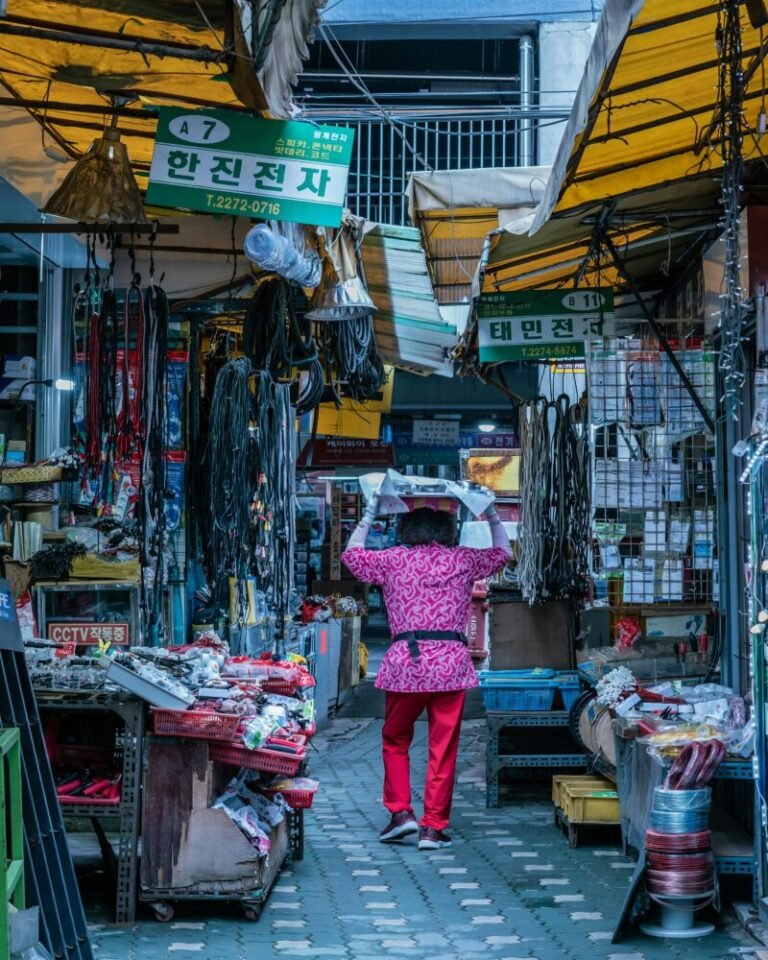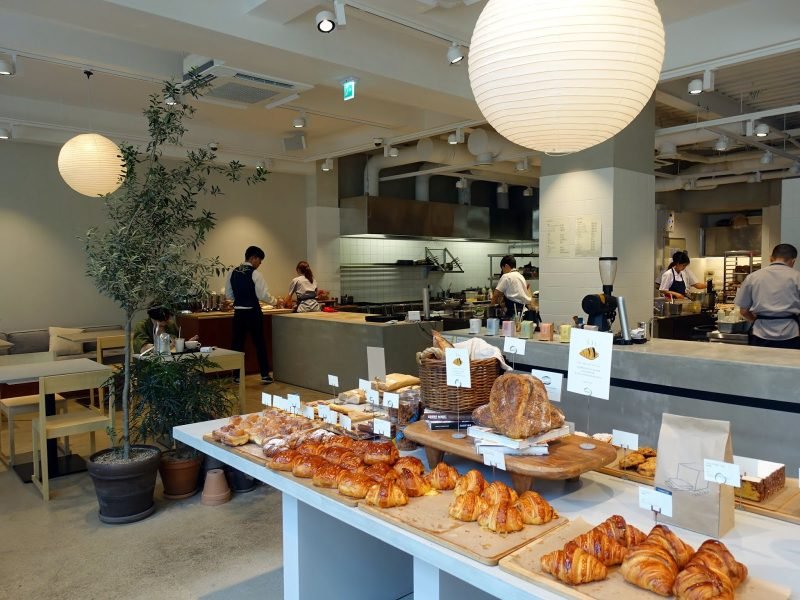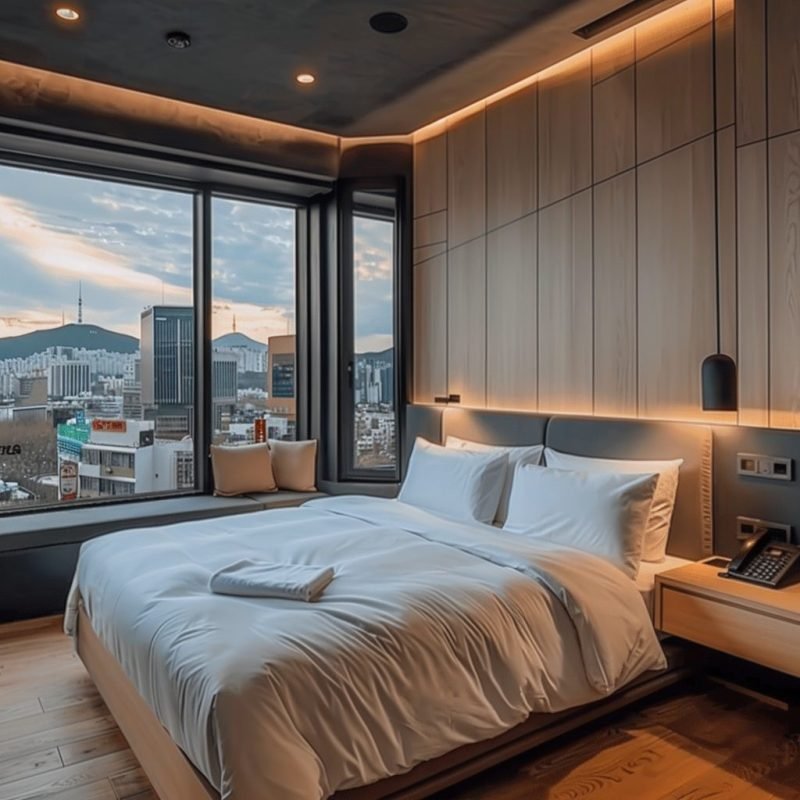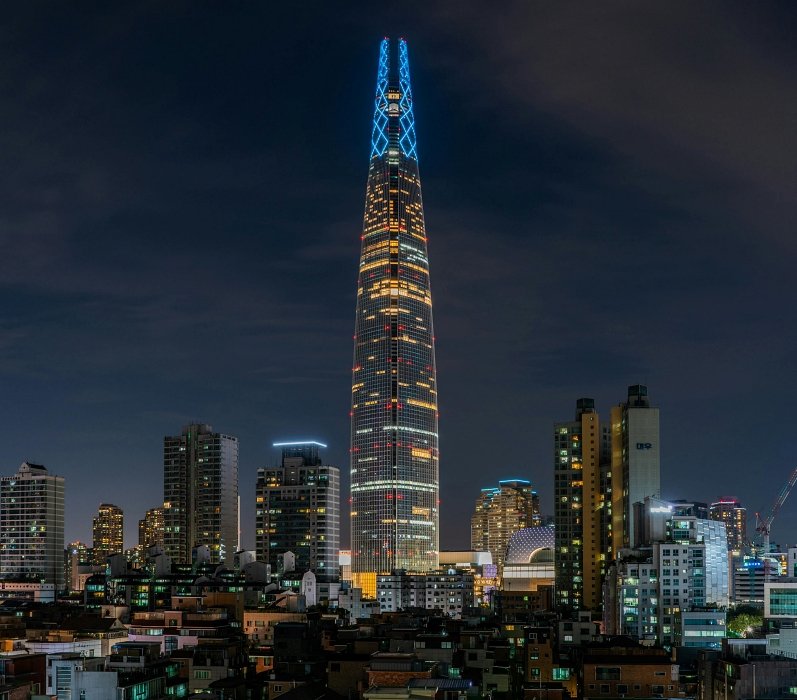Introduction
Seoul, the vibrant capital of South Korea, is a paradise for shoppers. From bustling traditional markets and trendy fashion districts to luxurious department stores, the city offers an unparalleled shopping experience that caters to every taste and budget. Shopping in Seoul is not just about acquiring items; it’s an exploration of culture, trends, and innovation.
Overview of Shopping in Seoul
Seoul’s shopping landscape is diverse, with each district offering its unique charm and specialties. Whether you’re looking for the latest fashion trends, electronics, traditional Korean crafts, or beauty products, Seoul has it all. The city’s shopping districts are alive at all hours, providing endless opportunities for shoppers to explore and indulge in their consumer desires.
Cultural Insights: What Makes Shopping in Seoul Unique
Shopping in Seoul goes beyond mere transactions. It’s an immersive experience that reflects the country’s rich culture and dynamic modernity. Here, traditional markets coexist with cutting-edge fashion districts. The city is a global leader in beauty and fashion trends, influencing markets worldwide. Furthermore, the hospitable service, including the widespread practice of offering free samples and the meticulous wrapping of purchases, adds a personal touch to the shopping experience.
Preparation for Shopping in Seoul
Essential Korean Phrases for Shopping
Knowing a few basic Korean phrases can greatly enhance your shopping experience. Phrases such as “얼마예요?”- “Eol Ma Ye Yo?” (How much is this?), “이것 주세요” – “E Geot Ju Se Yo” (Please give me this), and “할인되나요?” – “Hal In Doei Na Yo?” (Is there a discount?) can be incredibly helpful. Politeness goes a long way in Korea, so always remember to say “감사합니다” – “Gam Sa Hap Ni Da” (Thank you).
Currency Exchange Tips
The South Korean Won (KRW) is the currency used. While many places accept credit cards, having cash on hand is useful, especially in traditional markets. For the best exchange rates, consider exchanging money at banks or authorized currency exchange offices rather than at the airport.
Understanding South Korea’s Tax Refund System for Tourists
Tourists in Korea can benefit from the VAT refund system for purchases over a certain amount at stores displaying the “Tax-Free” sign. Keep your receipts and request a tax refund at the airport before leaving the country to reclaim a portion of the VAT paid.
Navigating Seoul’s Shopping Districts
Myeongdong: A Haven for Fashion and Beauty Products
Myeongdong is the epicenter of beauty and fashion in Seoul. The streets are lined with stores offering the latest in Korean skincare and cosmetics. Fashion boutiques offer a wide range of styles, from trendy to classic. Street food vendors and entertainment options abound, making Myeongdong a must-visit for any shopper.
Dongdaemun: The 24-Hour Shopping District
Dongdaemun is famous for its round-the-clock shopping. It’s home to massive fashion malls that house thousands of shops, offering everything from fabrics to accessories and ready-to-wear garments. The district is also known for its historic sites, blending shopping with cultural exploration.
Insadong: Where Tradition Meets Modernity
Insadong is the place to find traditional Korean goods, such as ceramics, tea, and antiques. The area exudes a more laid-back vibe, with art galleries and tea houses nestled among the shops, offering a glimpse into Korea’s rich cultural heritage.
Itaewon: Diverse and International Offerings
Itaewon is known for its international ambiance, catering to a diverse crowd with its wide array of cuisines, bars, and shops. Here, you can find custom tailoring, foreign books, and eclectic fashion, making it a favorite among expats and tourists alike.
Hongdae: Youthful Fashion and Vintage Finds
Hongdae, the area around Hongik University, is a hub for youth culture, known for its indie music scene, clubs, and unique shops selling vintage and handmade items. The area’s creative vibe is reflected in its fashion offerings, ranging from the latest trends to quirky, one-of-a-kind pieces.
Gangnam: Luxury Shopping and Trendy Boutiques
Gangnam is synonymous with luxury and style, featuring high-end boutiques, beauty salons, and designer stores. The district’s upscale malls and department stores offer a curated selection of global luxury brands, alongside trendy Korean labels.
Each of Seoul’s shopping districts offers a distinct experience, from the traditional to the ultra-modern, reflecting the city’s diverse cultural landscape and its status as a global fashion and beauty capital. Whether you’re a seasoned shopper or a curious traveler, Seoul’s dynamic retail environment promises an unforgettable adventure.
Specialty Shopping in Seoul
K-Beauty Products: Where to Find the Best Deals
Seoul is the heartland of the global K-beauty phenomenon, with Myeongdong being the ultimate destination for beauty enthusiasts. Here, stores like Innisfree, Etude House, and Missha offer a wide range of skincare and makeup products. For the best deals, look out for multi-buy offers, in-store promotions, and free samples. Ewha Woman’s University shopping street is another hotspot for affordable beauty buys.
Electronics and Technology in Yongsan Electronics Market
Yongsan Electronics Market, the largest of its kind in South Korea, is a must-visit for tech enthusiasts. Spread across multiple buildings, it offers everything from computers, cameras, and smartphones to rare electronic components. Bargaining is common, and comparing prices between vendors can ensure you get the best deal.
Traditional Korean Goods and Souvenirs
Insadong is renowned for its selection of traditional Korean goods, perfect for souvenirs. Here, you can find handmade crafts, pottery, hanbok (traditional Korean attire), and calligraphy supplies. The Ssamziegil shopping complex, in particular, is home to numerous shops selling unique handmade items.
K-Pop Merchandise: Where to Buy
For K-Pop fans, Seoul is a treasure trove of merchandise. The Myeongdong and Hongdae districts are filled with shops dedicated to K-Pop, selling everything from albums and posters to official lightsticks and photo cards. SM Town at Coex Artium in Samseong-dong offers an extensive range of merchandise from SM Entertainment artists.
Markets and Street Food
Namdaemun Market: The Largest Traditional Market
Namdaemun Market offers a vast array of goods, from clothing and accessories to kitchenware and traditional Korean snacks. It’s also a great place to sample street food, with delicacies like hotteok (sweet pancakes) and kalguksu (knife-cut noodle soup).
Gwangjang Market: For Vintage Clothing and Street Food
Gwangjang Market is famous for its vintage clothing section and bustling food alleys. It’s one of the best places to try traditional Korean street food, such as bindaetteok (mung bean pancakes) and yukhoe (Korean beef tartare).
Street Food in Seoul: What to Try and Where
Seoul’s street food scene is vibrant, offering a delicious array of snacks. Must-tries include tteokbokki (spicy rice cakes), odeng (fish cake skewers), and Korean fried chicken. Myeongdong, Dongdaemun, and Hongdae are among the best districts to indulge in these delights.
Malls and Department Stores
A Guide to Seoul’s Mega Malls
Seoul’s mega malls, like Starfield COEX Mall in Gangnam and Times Square Mall in Yeongdeungpo, offer a comprehensive shopping experience with a mix of retail stores, entertainment options, and dining. COEX also features a massive aquarium and a cinema.
Department Store Highlights: Lotte, Shinsegae, and More
Lotte and Shinsegae are among Seoul’s most prestigious department stores, offering a luxury shopping experience with a wide range of international and Korean brands. These stores often feature gourmet food courts, art galleries, and seasonal events, providing not just shopping but a cultural experience.
Seoul’s specialty shopping offers something for everyone, from tech aficionados and beauty lovers to fans of traditional Korean culture and K-Pop. The city’s markets, street food, malls, and department stores highlight the rich diversity and dynamic retail landscape of the Korean capital, making it a premier shopping destination in Asia.
Tips for Enjoyable Shopping Experience
Bargaining: Do’s and Don’ts
Do : Attempt to bargain in markets and street stalls where prices are not fixed.
Don’t : Try to negotiate in department stores or established shops with displayed prices.
Do : Be polite and friendly; a smile can go a long way.
Don’t : Be aggressive or confrontational; if a seller is not willing to lower the price, it’s best to move on.
Shopping Etiquette in South Korea
Be Mindful of Manners : Greet shopkeepers when entering and thank them when leaving.
Respectful Handling : Use both hands when receiving or giving items, especially money or credit cards.
Queue Respectfully : Wait your turn patiently, especially in crowded markets or popular stores.
Safety Tips for Tourists
Use Secure Payment Methods : Prefer credit cards or mobile payments for large transactions.
Stay Informed : Be aware of local scams and report any suspicious activity to authorities.
Beyond Shopping: Experiences and Activities
Beauty and Wellness: Spas and Salons
Seoul is renowned for its beauty and wellness culture. Visit a jjimjilbang (Korean spa) for relaxation, or book a treatment at one of the city’s many beauty salons for a pampering experience.
Cultural Experiences: Workshops and Classes for Tourists
Engage in cultural workshops like kimchi making, traditional tea ceremonies, or Hanbok wearing to deepen your understanding of Korean culture.
Entertainment: K-Pop Concerts, Shows, and Events
Seoul is the heart of K-Pop. Check online for concerts and events happening during your visit. Non-verbal performances like Nanta or B-Boy shows are also great entertainment options for non-Korean speakers.
Practical Information
Transportation: Getting Around Shopping Districts
Subway : Seoul’s subway system is extensive, efficient, and covers most shopping districts.
Taxis : Taxis are relatively affordable but ensure the driver turns on the meter.
Walking : Many shopping districts are pedestrian-friendly and exploring on foot can be a delightful experience.
Payment Methods: Cash, Cards, and Mobile Payments
While credit cards are widely accepted, it’s advisable to carry some cash for smaller shops or markets. Mobile payments are increasingly common, offering a convenient alternative.
Shipping and Delivery Services for Tourists
Many stores offer international shipping services for your purchases. For convenience, inquire about delivery options to your home country or hotel.
Conclusion
Maximizing Your Shopping Experience in Seoul
To fully enjoy Seoul’s shopping scene, blend in visits to both modern malls and traditional markets. Respect local customs, be open to trying new things, and don’t hesitate to explore beyond commercial areas.
Useful Apps and Resources for Foreigners
Leverage apps like ‘Naver Maps’ for navigation, ‘Papago’ for translation, and ‘Kakao T’ for taxis. For shopping, apps like ‘Coupang’ or ‘Gmarket’ can offer insights into local prices and products.
By following these tips and embracing the diverse shopping and cultural experiences Seoul has to offer, your visit will not only be enjoyable but also deeply enriching.




